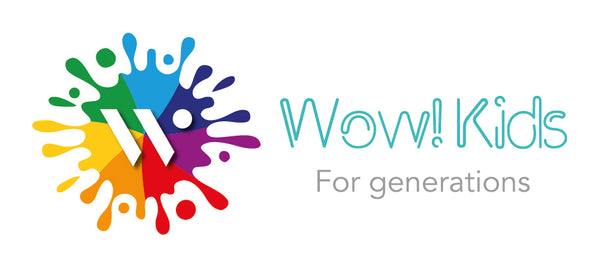
How to Communicate Effectively With Children : A Parent’s Guide to Building Trust and Connection
Share
Communication is at the heart of every healthy relationship, and it’s especially important when it comes to children. At Wow! Kids Toys, our philosophy has always been rooted in intentional parenting and play-based learning, but no toy in the world can replace the power of kind, clear, and mindful communication.
In this article, we explore four research-backed strategies that can help parents, guardians, and caregivers communicate more effectively with their little ones. These techniques foster emotional development, reduce conflict, and strengthen the child-parent bond.
1. Ask Questions That Invite More Detail
❌ Ineffective: “Did you have a good day?”
✅ Effective: “What was the highlight of your day?”
Why it works:
Open-ended questions promote deeper cognitive processing and help children reflect on their experiences. According to Harvard University’s Center on the Developing Child, strong language skills in early childhood are directly linked to increased school readiness and emotional competence.
In fact, research from the American Academy of Pediatrics found that conversational turns between adults and children in early childhood are linked to a 27–40% increase in IQ by age 5. This shows the importance of not just talking to your child, but with them.
Example:
Instead of “Did you play?” try “Who did you play with today, and what game did you enjoy the most?”
Wow! Tip: During play with toys like our Montessori wooden puzzle sets, ask your child how they figured out a piece. It teaches both communication and problem-solving.
2. Set Clear Expectations
❌ Ineffective: “Behave well in the store.”
✅ Effective: “We’re going to the store, so let’s use our indoor voices and stay close to me.”
Why it works:
Children respond better to specific, concrete instructions than to vague commands. Research published in the Journal of Positive Behavior Interventions shows that clear guidance increases compliance by over 30% in preschool-aged children.
Moreover, a 2022 study from the University of Michigan found that children who were given explicit instructions were 60% more likely to follow through successfully than those who were told to “be good” or “do the right thing.”
Example:
Before a playdate, say: “Let’s take turns with the toys and use kind words when we want a turn.”
Wow! Tip: Use this method during collaborative play with toys like our interlocking building blocks or wooden race cars, where turn-taking and teamwork are crucial.
3. Exercise Patience
❌ Ineffective: “Hurry up, we’re late!”
✅ Effective: “I know we’re in a rush, but let’s try to get ready as quickly as we can.”
Why it works:
Children mirror adult behavior. A study in Child Development Research confirms that parental stress can increase a child’s anxiety levels by up to 20%, especially in time-pressured moments. Practicing calm communication models emotional regulation for your child, making transitions less chaotic.
Additionally, data from the CDC’s National Center for Chronic Disease Prevention shows that children raised in calm and nurturing environments have a 25% lower risk of developing behavioral issues in later years.
Example:
Rather than yelling during cleanup, say: “Let’s race to see who can put their toys away first!”
Wow! Tip: Involve children in clean-up using our wooden toy storage bins as part of a routine, turning it into a calming activity.
4. Identify and Discuss Emotions
❌ Ineffective: “Stop crying!”
✅ Effective: “I see you’re upset. Can you tell me what’s wrong?”
Why it works:
Children need help naming and processing emotions. According to Dr. John Gottman’s research on "emotion coaching," children whose parents help them label emotions have better academic outcomes, more positive friendships, and stronger mental health.
A 2021 study in the journal Emotion found that children who were taught emotional vocabulary by age 3 scored 20% higher on emotional regulation tests by age 5, compared to those who weren’t.
Example:
Instead of brushing off sadness, say: “It’s okay to feel disappointed. Do you want to talk about what happened?”
Wow! Tip: Roleplay different emotions using our wooden doll sets or storytelling puppets to help children practice empathy and understanding.
Final Thoughts
At Wow Kids Toys, we believe that every toy and every moment can be a tool for connection. Whether you’re building a puzzle, setting up a pretend grocery store, or simply brushing your teeth before bed, how you communicate can turn the ordinary into the extraordinary.
These simple, intentional communication techniques aren’t just about getting your child to listen, they’re about helping them feel seen, safe, and understood.
So the next time your little one acts out or clams up, try slowing down, getting on their level, and using your words with purpose. After all, the most meaningful parenting happens in the quiet, in-between moments.

